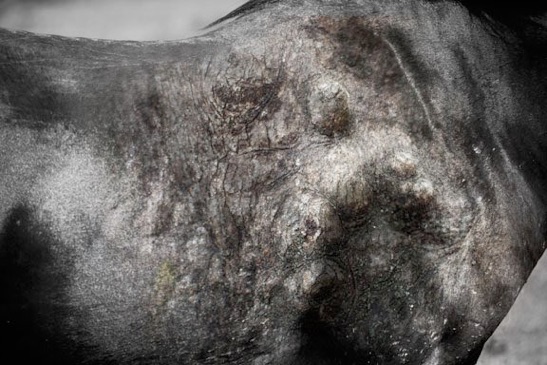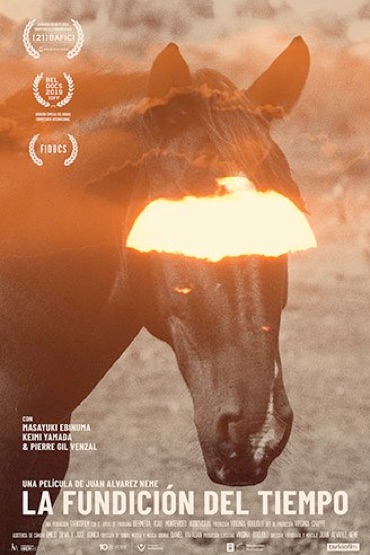production funds by








development funds by


state
distribution
country
Uruguay
language
spanish
french
japanese
format
HD color
16mm
length
100 min
The Smelting of time
{non fiction}
Directed by Juan Alvarez Neme.
An encounter between a girl and a tree doctor in Nagasaki´s forest. A horse tamer searches for a wild animal across a timeless wasteland.
This essay observes(and imagines)the relationship between humanity and bestiality, horror and resistance. The laws of nature and redemption construct this spectral universe that is at the same time as definite as the hands that plant, tame, pacify and relieve.
Original title: La fundición del tiempo Country: Uruguay Language: Japanese, french, spanish Production year: 2019 Length: 100 minutes
Cast: Maysayuki Ebinuma, Keimi Yamada & Pierre Gil Venzal.
Festivals
Best Latinamerican Film award, BAFICI 2019
Special Jury Mention, BELDOCS 2019
FIDCOS 2019
Official competition SANFICI 2019
Iberoamerican Competition LIMA ALTERNA IFF 2020
Best Uruguayan film ATLANTIDOC 2020


The Smelting of Time tells two stories. Each of the two stories, in turn, contains a world of evocations about nature, about the ways to dominate it, and redemption. In this film, survivors live together with the dead in an environment made up of present and memory. Young Keimi asks Dr. Ebinuma to tell his story. The forest and Keimi witness a story that the man tells in a clear voice and without detours. A bomb explodes in Nagasaki and the most terrifying of disasters occurs, one that is cooked in the instant death of innocent people, and leaves its mark everywhere, in every corner, in the places abandoned at the last moment, in the paths that did not work as escape routes, in the fortunate decisions and in the misfortune of chance and chaos. In the repercussions of terror, of savagery, of death. In the illness that develops as a result of the bombardment, throbbing down a road that silently, inevitably reaches today.

Ebinuma sees a tree deformed by the impact of radiation and decides to cure it. His care restores health to the tree, and so the man begins a mission: the planting of persimmon trees as a way of resistance, yes, but also of peace. The feat, the insurrection are shaped with the patience with which a small fish is cooked (in the classic Tao Te Ching: "cook a small fish as if you ruled a great empire, rule a great empire as if you cooked a small fish"), in the work with seeds, with the seedlings, with the earth and the forests; in their journeys, or making a stop on the way.
Horror is fought with trees. Cruelty and barbarism, also with trees. This poetic essay portrays the epic by means of a clear, detailed observation of Dr. Ebinuma’s daily life, and through the lively, naïve curiosity of Keimi, a girl who appears, between truth and mist, as a representative of a world and a humanity lost with the bomb, or as a representative of the new world that resprouts in the middle of an infinite forest.
The initial dreaminess unfolds into a second part that introduces Pierre, a man who tames horses by means of the word in the Uruguayan countryside. Near the shore of a river, near some persimmon tree, a man enters a forest following the tracks of the hooves of a herd of wild horses. His strategy becomes apparent as the man advances, stealthily, expectantly. It is the speech that tempers the rebellious character of the animal. The words the man chooses. The phrasing. The cadence. The score that between all the words and all the silences is composed to establish a bond of submission. A story that is told in the man’s movements, in the choreography of his stalking, in his way of speaking, which sometimes seems loving and sometimes feels sprinkled by lasciviousness, a story seen and heard with the alert distrust with which we measure those who tell us beautiful words with no other purpose than to hunt us down or make us stumble.
In The Smelting of Time we gaze at the passing of seasons, the crowns of trees, the need to stick to a routine and to replicate a feat that fights the brutality which on the back of this story swings between animal and human.
A composition of grass, trees, river, animal and man, portraying with vigor, grit and a laconic flair a high-contrast bond: the bestial affirmation of human power.
Inés Bortagaray




Juan Alvarez Neme
Biography
Montevideo, 1972
Film director & producer.
Degree from the Uruguayan Film School in 1999.
Filmography
As director:
“The cultivation of the invisible flower", {documentary, 2012, 84 min},
BAFICI 2012, E tudo verdade 2012, International Film Festival of Uruguay 2012.
"Avant" {documentary, 2012, 98 min}
Official Selection DocsBarcelona 2014, DocBuenos Aires 2014, Fidocs 2014, FIC Mar del Plata 2014, DocsBarcelona Medellín 2014, La Habana 2014, Margaret Mead FF 2015, FICCI 2015. Awarded as Best Documentary, Detour 2014.
As producer:
“Straight to video” de Emilio Silva. {documental, 2020}
“Hilda´s short summer” de Agustín Banchero {ficción, 2020}